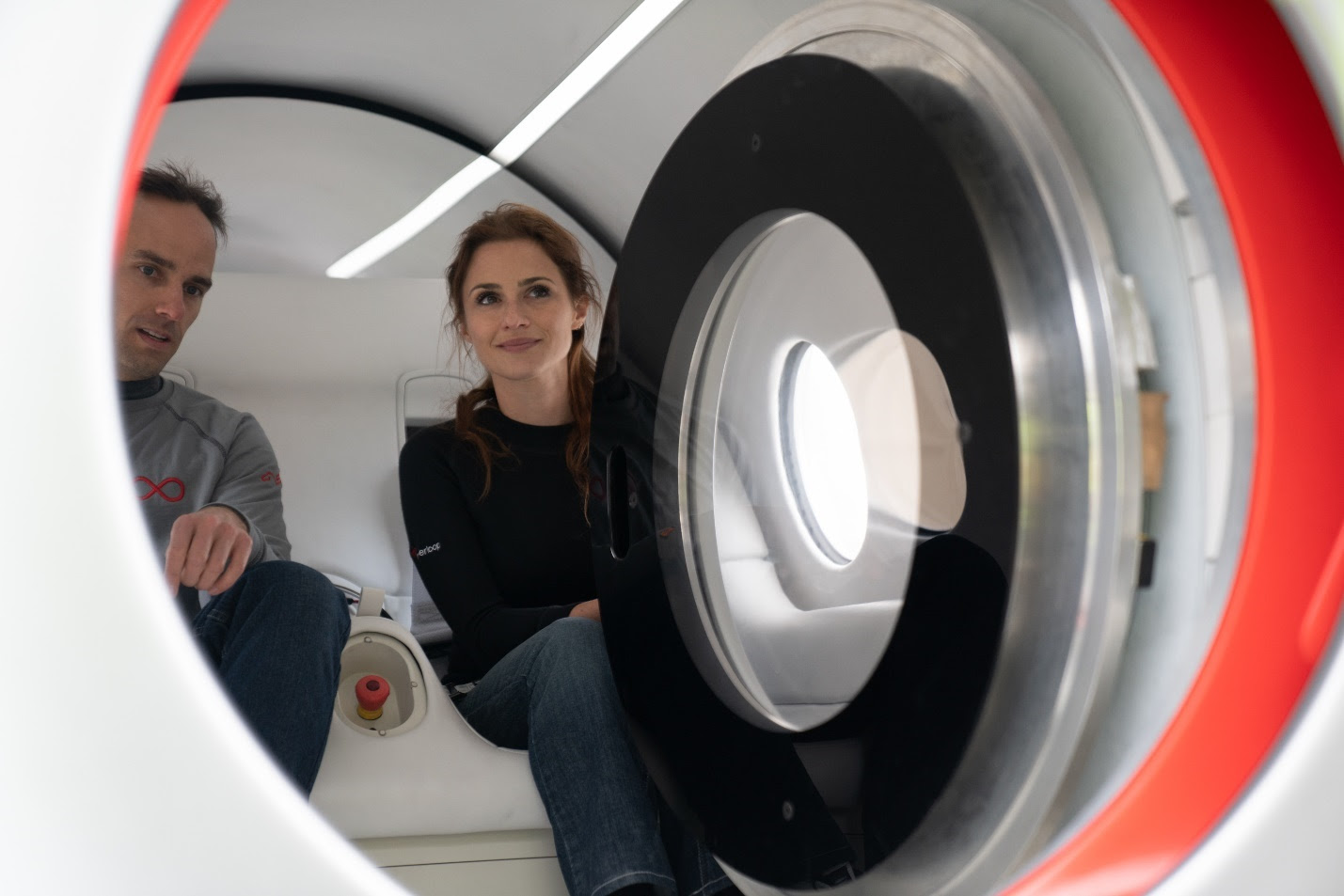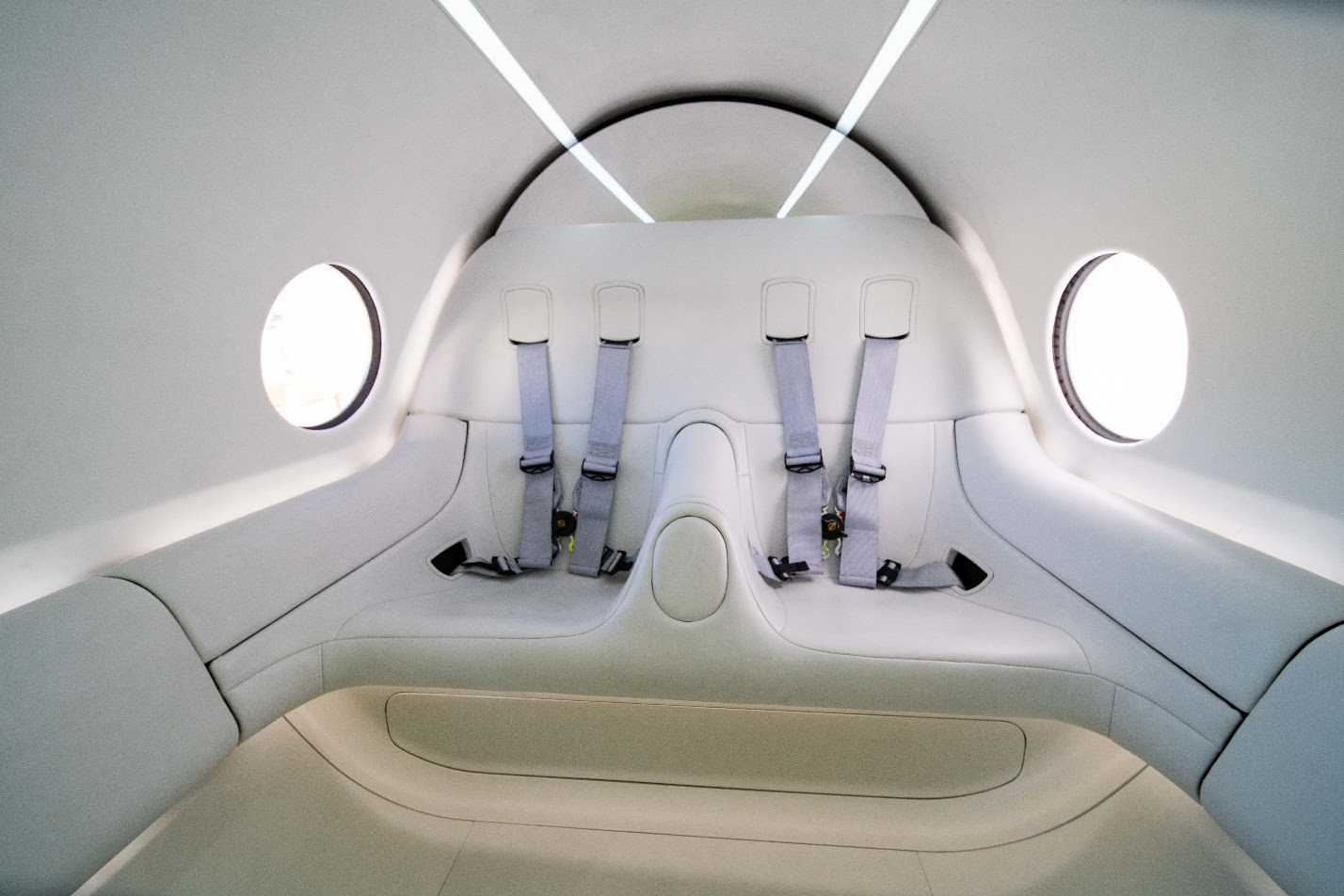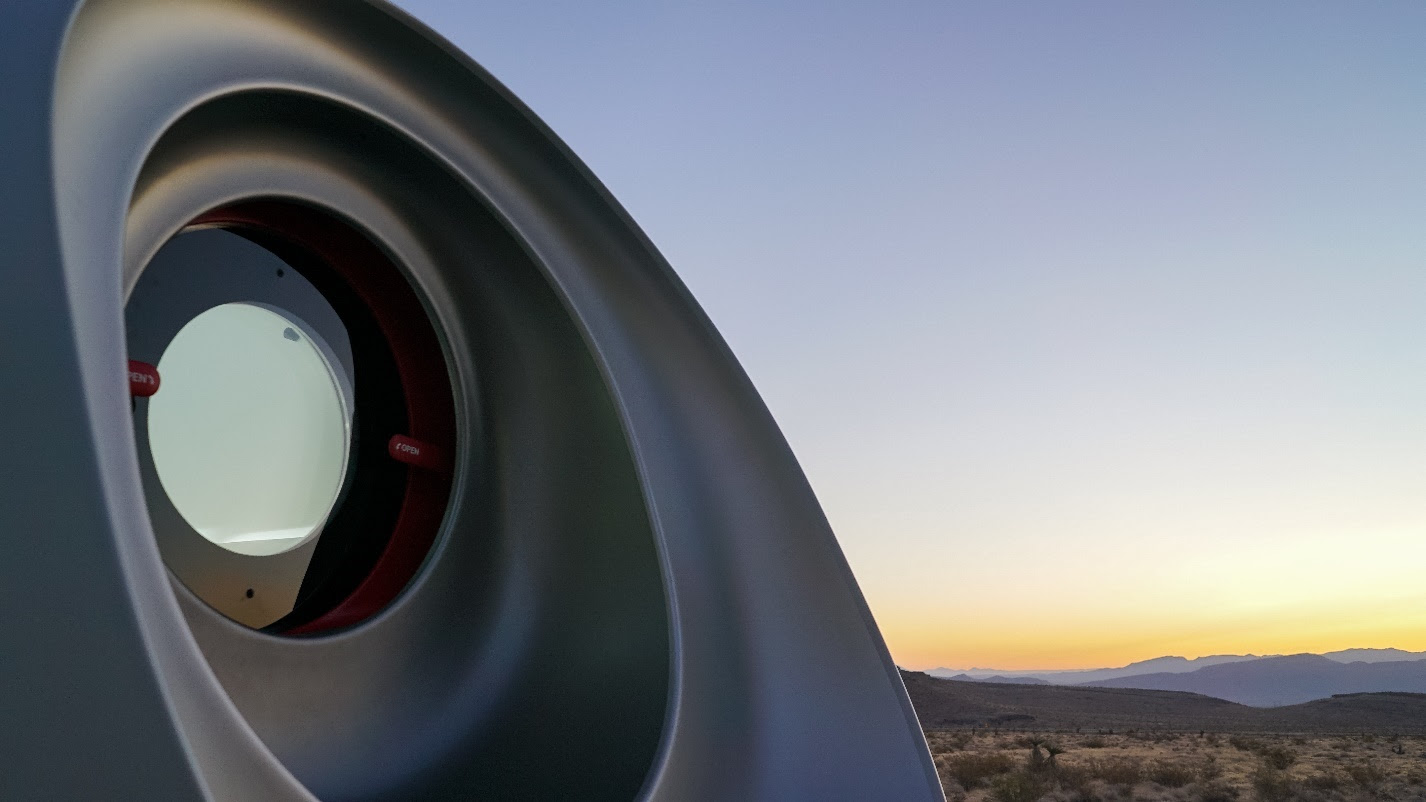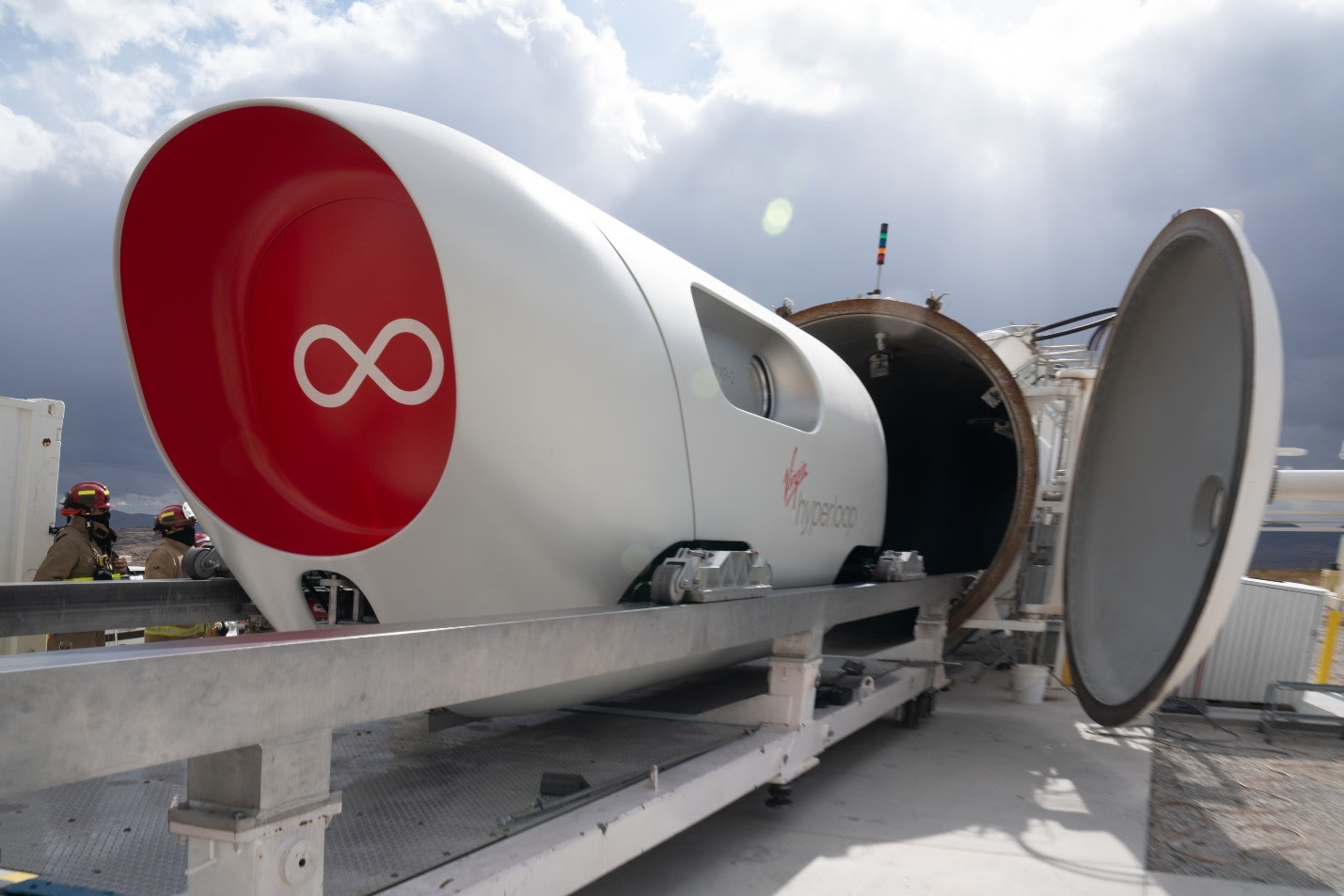After a year of close collaboration between Virgin Hyperloop, Bjarke Ingels Group (BIG), and Kilo Design, the Pegasus Pod has become the first manned and fully functional system for Hyperloop travel after a successful test in the Nevada desert.
BIG and Kilo designed for the pod’s first use case while also defining the design language and characteristics for future Virgin Hyperloop vehicles. The two-seater Pegasus Pod was built to demonstrate that passengers can safely travel in a Hyperloop vehicle. It is equipped with a control system that can detect off-nominal states and rapidly trigger appropriate emergency responses. The six-sm interior has the necessary safety equipment and controls built into the furniture. The production vehicle will be larger and seat up to 28 passengers.

The front scoops of the vessel create natural steps for easy entry and egress, and apertures on the sides of the fairing and on the front door contain a forward-facing window for outward viewing down the tunnel. These features create a link to Pegasus’ external design, where repeating soft forms and pill-shape cutouts are used to highlight depth, layers, and entryways.
Inside, the seating elements and extended arms function as an entry and egress aid, storage for safety equipment, oxygen throughput, and lighting. The seats can also be quickly assembled and disassembled for rear equipment access.

“When designing the future of transportation and the slate is sort of blank, the opportunities are endless. We’ve needed to adjust our way of thinking away from the classic modes of transporting like trains, planes and metros, and towards a new vehicle typology, closest to that of a spaceship,” said Jakob Lange, Partner, BIG, in a release.


Related Stories
| Jun 2, 2014
Parking structures group launches LEED-type program for parking garages
The Green Parking Council, an affiliate of the International Parking Institute, has launched the Green Garage Certification program, the parking industry equivalent of LEED certification.
| May 29, 2014
7 cost-effective ways to make U.S. infrastructure more resilient
Moving critical elements to higher ground and designing for longer lifespans are just some of the ways cities and governments can make infrastructure more resilient to natural disasters and climate change, writes Richard Cavallaro, President of Skanska USA Civil.
| May 20, 2014
Kinetic Architecture: New book explores innovations in active façades
The book, co-authored by Arup's Russell Fortmeyer, illustrates the various ways architects, consultants, and engineers approach energy and comfort by manipulating air, water, and light through the layers of passive and active building envelope systems.
| May 19, 2014
What can architects learn from nature’s 3.8 billion years of experience?
In a new report, HOK and Biomimicry 3.8 partnered to study how lessons from the temperate broadleaf forest biome, which houses many of the world’s largest population centers, can inform the design of the built environment.
| May 13, 2014
19 industry groups team to promote resilient planning and building materials
The industry associations, with more than 700,000 members generating almost $1 trillion in GDP, have issued a joint statement on resilience, pushing design and building solutions for disaster mitigation.
| May 11, 2014
Final call for entries: 2014 Giants 300 survey
BD+C's 2014 Giants 300 survey forms are due Wednesday, May 21. Survey results will be published in our July 2014 issue. The annual Giants 300 Report ranks the top AEC firms in commercial construction, by revenue.
| Apr 29, 2014
USGBC launches real-time green building data dashboard
The online data visualization resource highlights green building data for each state and Washington, D.C.
Smart Buildings | Apr 28, 2014
Cities Alive: Arup report examines latest trends in urban green spaces
From vertical farming to glowing trees (yes, glowing trees), Arup engineers imagine the future of green infrastructure in cities across the world.
| Apr 9, 2014
Steel decks: 11 tips for their proper use | BD+C
Building Teams have been using steel decks with proven success for 75 years. Building Design+Construction consulted with technical experts from the Steel Deck Institute and the deck manufacturing industry for their advice on how best to use steel decking.
| Apr 2, 2014
8 tips for avoiding thermal bridges in window applications
Aligning thermal breaks and applying air barriers are among the top design and installation tricks recommended by building enclosure experts.

















